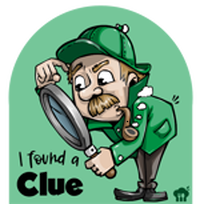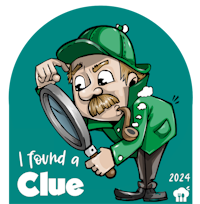
Questions: Do you always use the Oxford comma, only sometimes, or never? Do you like to include ampersands in your scrapbook layouts? Do you think the ampersand is more stylish & decorative, or just a shortcut for ‘and’ in scrapbooking?
From the lowly comma to the flamboyant ampersand, National Punctuation Day on September 24 celebrates the punctuation that makes our words legible and gets our point across. “Let’s eat, Grandma!” or “Let’s eat Grandma!” — it’s clear that punctuation saves lives. Though you might not have consciously considered punctuation since elementary school, you likely use it every day. Every year, the creator of the holiday sets a punctuation challenge, and punctuation quizzes and games can be found all over the country.
HOW TO OBSERVE NATIONAL PUNCTUATION DAY
1. Look out for punctuation errors
While you read the newspaper and have your coffee today, pay extra attention to punctuation. It’s amazing how many errors slip past even the most seasoned publishers! Spend the day reading and circling when punctuation is used incorrectly.
2. Take the punctuation challenge
Each year, the day’s founder sends out a punctuation challenge. The test can be found on the website for National Punctuation Day and consists of punctuation games.
3. Post #NationalPunctuationDay
Any grammar nerd would be excited to see #NationalPunctuationDay pop up in their timeline! Post it so more people in your circle can partake in the joy that is punctuation-checking today.
5 FUN FACTS ABOUT PUNCTUATION
1. A question mark was… a word?
While today we end literary queries with a simple symbol, ‘?,’ those who used Latin would write out the word ‘questio’ to indicate the end of a question!
2. Do you know what ‘#’ is called?
You might have said ‘pound’ or ‘hashtag’ (maybe depending on your generation) — little did we know, its official name is an ‘octothorpe’!
3. Punctuation hasn’t always existed
In early writing, text was just long strings of characters, unbroken by spaces or punctuation.
4. There was an ampersand-inclusive alphabet
Coming in hot after the letter ‘z’, the ampersand was stated in the alphabet as ‘z and per se and’ — it was through years of lazy pronunciation that ‘and per se and’ became what we know today — ampersand.
5. ‘@’ doesn’t mean ‘at’ everywhere
While we might call this an ‘at mark’ or simply an ‘at,’ across the globe this name varies wildly — in Israel, you might call it a ‘strudel’ and in Russia, it’s a ‘little dog’!
Let’s celebrate every day!















